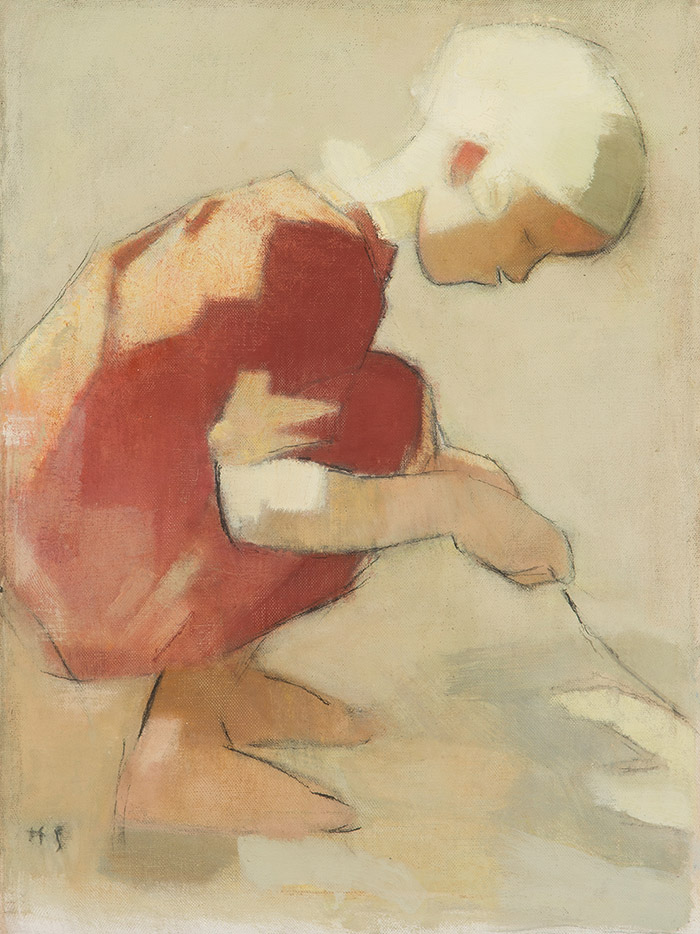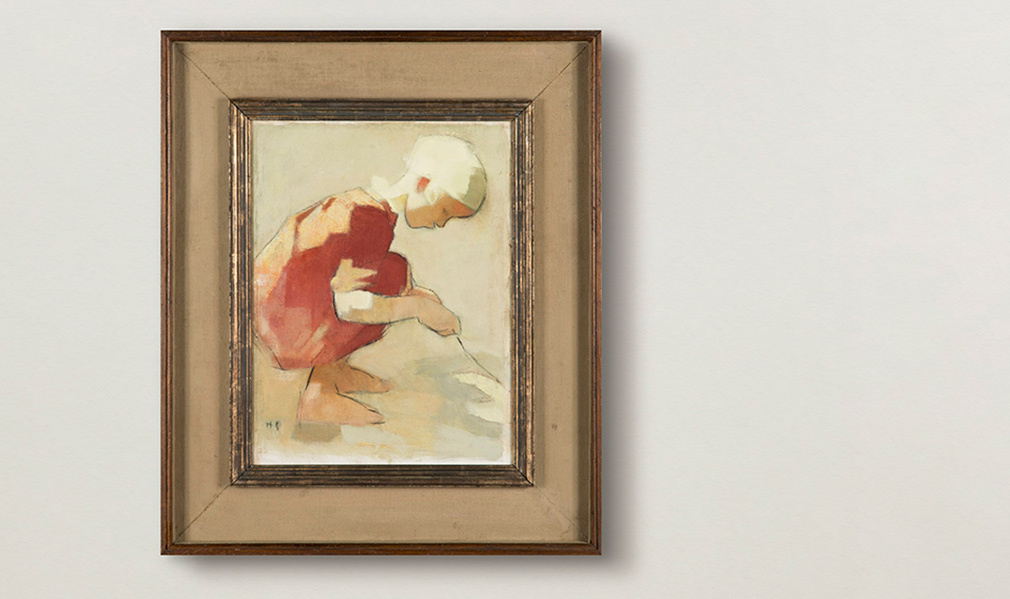Bukowskis presents a masterpiece by Helene Schjerfbeck
Helene Schjerfbeck
"Girl on the Sand"
Bukowskis is proud to present a masterpiece by Helene Schjerfbeck at this season's Helsinki Winter Sale.
The blacksmith Juho Kustaa Sahrmans and his wife Olga's four children, Elma, Einari, Martta, and Katri, served as inspiration for Helene Schjerfbeck in several paintings. In an interview with the author Lea Bergström, Martta revealed that in the early 1910s, she had modelled for the first version of "Girl on the Sand". The painting currently for sale is the only later interpretation of the two works with this motif painted thirty years earlier, and it was executed at the Luontola Sanatorium in Nummela in the midst of the Continuation War.
The two works from the early 1910s of "Girl on the Sand" are visually powerful, especially the oil painting (which has been part of Keirkner's collection from early on and since 1945 part of the Ateneum Art Museum's collection), where the cinnabar-red dress and the downy light-yellow hair practically shine in the viewer's eyes. The shapes, colours, and lines are modern and stripped down; sunlight rhythmically plays on the dress, while the neck and head are enveloped in a soft radiance. The girl's sour mood is excellently depicted with a modern and simplified artistic approach. The vibrant colour palette reflects the rainbow colours that were sought after in Finnish art at the time, replacing the darker shades. At this point however, Helene Schjerfbeck mainly followed the Finnish art world through newspapers, letters, and discussions with friends, as she remained firmly stationed in Hyvinkää and had not yet even met her future art dealer Gösta Stenman or artist friend Einar Reuter.

The version from 1942 is more subdued but shares something in common with the two earlier works, including the gouache painting (which belonged to the artist Eric O.W. Ehrström's collection early on and is now owned by the Gösta Serlachius Foundation). However, the overall impression is characterised by the painting's specific, unique aura and darker colour palette. In the earlier paintings, the girl's posture is so hunched over that her ankles are barely visible, with only her shoes supporting her. In this later version, she is barefoot and not as hunched over. The mood is focused and balanced. The twig in the girl's hand is straighter and held more firmly, seemingly drawing its own patterns in the expressively depicted sand. The characteristic green hue for the artist has, in some places, complimented the pale-yellow colour to add sensitivity to the colour palette. Like the gouache version, the charcoal lines provide contours and define the forms. This interpretation of "Girl on the Sand" is modern and stripped down, with a calmer and more peaceful mood than the first versions she painted in her 50s. The motif is placed outdoors, which was unusual for Schjerfbeck, and this time, she fully captures the contrast between light and shadow. The girl's face is in strong shadow compared to her bright hair. The painting's balanced yet multifaceted mood once again demonstrates Helene Schjerfbeck's virtuosity and makes it something entirely different from a traditional child's portrait.
At Helene Schjerfbeck's 80th-anniversary tribute exhibition at Gösta Stenman's art salon in Stockholm, "Girl on the Sand" from 1942 served as a prime example of the artist's perpetually youthful creative power.
The work will be sold at Bukowskis' upcoming online auction Helsinki Winter Sale, November 17–29. For more information and condition reports, please contact our art specialist Johan Wulff.
View the catalogue for Helsinki Winter Sale
Text: Leena Ahtola-Moorhouse

More information & condition reports Contact our art specialist

Helsinki
Johan Wulff
Head Specialist art, prints and photography
+358 (0)50 410 1377























